Iodixanol
Synonym(s):Iodixanol
- CAS NO.:92339-11-2
- Empirical Formula: C35H44I6N6O15
- Molecular Weight: 1550.18
- MDL number: MFCD00867965
- EINECS: 618-837-0
- SAFETY DATA SHEET (SDS)
- Update Date: 2025-12-17 08:57:39
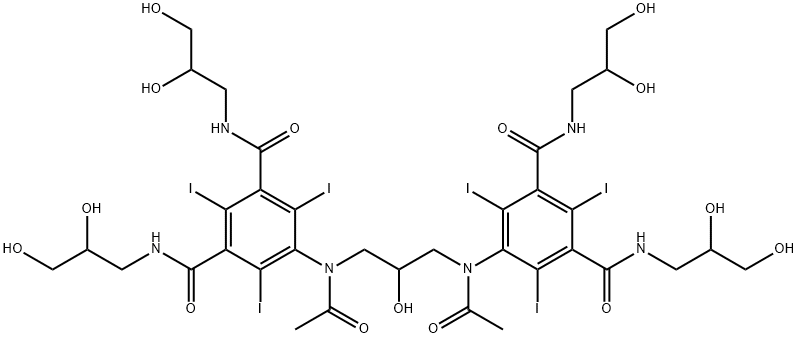
What is Iodixanol?
Toxicity
Non-ionic radiocontrast agents like iodixanol are cytotoxic to renal cells. The toxic effects include apoptosis, cellular energy failure, disruption of calcium homeostasis, and disturbance of tubular cell polarity, and are thought to be linked to oxidative stress.
Chemical properties
White Solid
Originator
OptiPrep,Nycomed Pharma,Norway
The Uses of Iodixanol
Nonionic, dimeric x-ray contrast medium. Diagnostic aid (radiopaque medium).
Background
Iodixanol is a nonionic hydrophilic compound commonly used as a contrast agent during coronary angiography, particularly in individuals with renal dysfunction, as it is believed to be less toxic to the kidneys than most other intravascular contrast agents.
Indications
Iodixanol is a contrast agent during coronary angiography.
What are the applications of Application
Iodixanol is a radiopaque medium
Definition
ChEBI: A dimeric, non-ionic, water-soluble, radiographic contrast agent, used particularly in coronary angiography.
Manufacturing Process
Dimethyl 5-nitroisophthalate (215 g) and 1-amino-2,3-propandiol (196 g)were refluxed in methanol (500 ml). After twenty hours the solution was
cooled and stored in a refrigerator overnight. The product 5-nitro-N,N'-
bis(2,3-dihydroxypropyl)-isophthalamide was filtered and washed with
methanol. Yield: 270 g (84%). M.p. 128-132°C.
5-Nitro-N,N'-bis(2,3-dihydroxypropyl)-isophthalamide (18.1 g) was suspended
in water (250 ml), conc. hydrochloric acid (4.2 ml) and 10% PdO/charcoal
(0.5 g) were added, and the mixture hydrogenated in a Parr apparatus for one
day. After filtration the filtrate was heated at 80-90°C and 3.88 M NaICl2
(42.5 ml) was added through a dropping funnel over 1 hour. The solution was
heated for 2.5 hours. After cooling to 20°C 5-amino-2,4,6-triiodo-N,N'-
bis(2,3-dihydroxypropyl)-isophthalamide crystallized out.
5-Amino-2,4,6-triiodo-N,N'-bis(2,3-dihydroxypropyl)-isophthalamide (110 g)
was suspended in acetic anhydride (480 ml) and heated to 50°C.
Concentrated sulfuric acid (3 ml) was then added. The starting material was
dissolved after a few minutes, and the reaction mixture was heated at 60°C
for 75 min. After cooling the residue dissolved in methanol (300 ml) with
water (150 ml) the solution was heated to 50°C and the pH adjusted to about
10.5 by 10 N sodium hydroxide. After 4-5 hours the pH didn't decrease, and
the hydrolysis was complete. The reaction mixture was cooled to 20°C and
neutralized by adding hydrochloric acid. After stirring overnight 5-Acetamido-
2,4,6-triiodo-N,N'-bis(2,3-dihydroxypropyl)-isophthalamide was filtered and
washed with water. Yield: 94 g (80%). Melting point 275°C, dec.
2-Methoxyethanol (300 ml) and sodium hydroxide (20 g) was added to the
reactor at 50°C, and 5-acetamido-N,N'-bis(2,3-dihydroxypropyl)-2,4,6-
triiodoisophtalamide (304 g) was added after two hours of stirring. All solids
were allowed to dissolve overnight before cooling to 30°C and adjustment to
pH 12 with diluted hydrochloric acid. Epichlorohydrin (11 g) was added to the
solution after further cooling to 15°C, and the reaction was allowed to proceed
for 51 hours. As a result 1,3-bis(acetamido)-N,N'-bis[3,5-bis(2,3-
dihydroxypropylaminocarbonyl)-2,4,6-triiodophenyl]-2-hydroxypropane was
obtained.
brand name
Visipaque (GE Healthcare).
Therapeutic Function
Diagnostic aid
General Description
Iodixanol is a viscous, isosmolar,nonionic, water-soluble dimer with 49% iodine content.It is formulated as an isotonic solution for intravascular injectionand indicated for excretory urography, angiography,and CT procedures.
Pharmacokinetics
Iodixanol is a contrast agent commonly used during coronary angiography, particularly in individuals with renal dysfunction, as it is believed to be less toxic to the kidneys than most other intravascular contrast agents. It is an imaging contrast agent with the same osmolality as blood (290mOsm/kg H20).
Metabolism
Excreted unchanged
Properties of Iodixanol
| Melting point: | 262-267°C (dec.) |
| Boiling point: | 1250.9±65.0 °C(Predicted) |
| Density | 1.266 ±0.003 |
| vapor pressure | 0Pa at 20℃ |
| refractive index | n 1.4128 ±0.0003 |
| storage temp. | Refrigerator |
| solubility | Freely soluble in water, sparingly soluble in methanol, practically insoluble in methylene chloride. |
| form | neat |
| pka | 11.04±0.46(Predicted) |
| color | White |
| EPA Substance Registry System | 1,3-Benzenedicarboxamide, 5,5'-[(2-hydroxy-1,3-propanediyl)bis(acetylimino)]bis[N,N'-bis(2,3-dihydroxypropyl)-2,4,6-triiodo- (92339-11-2) |
Safety information for Iodixanol
Computed Descriptors for Iodixanol
Iodixanol manufacturer
New Products
4,4-Difluoropiperidine hydrochloride tert-butyl 9-methoxy-3-azaspiro[5.5]undecane-3-carboxylate Indole Methyl Resin N-Isopropylurea N,N-Dicyclohexylcarbodiimide(DCC) MELDRUMS ACID 5-METHYLISOXAZOLE-4-CARBOXYLIC ACID Magnessium Bis glycinate Zinc ascorbate 1-bromo-2-butyne 2-acetamidophenol 9(10H)-anthracenone Erythrosin B, 4-Piperidinopiperidine 2-((4-morpholinophenylamino) (methylthio) methylene) malononitrile 2,4-dihydroxybenzaldehyde 3-(4-morpholinophenylamino)-5-amino-1H-pyrazole-4-carbonitrile Methyl 2-methylquinoline-6-carboxylate 2,6-dichloro-4-nitropyridine 4-Bromo-2-chlorobenzonitrile 2-(benzylamino)acetic acid hydrochloride 4-(tert-Butoxycarbonylamino)but- 2-ynoic acid 3,4-dihydro-2H-benzo[b][1,4]dioxepine 1-Phenyl-1-cycloprppanecarboxylicacidRelated products of tetrahydrofuran



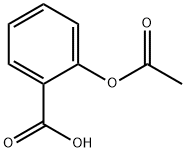

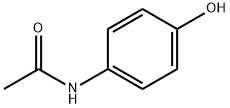
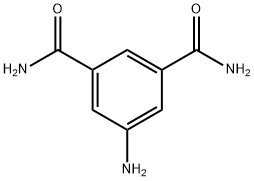
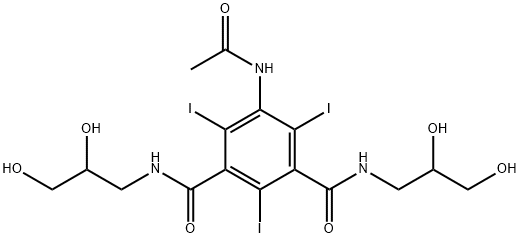
You may like
-
 Iodixanol >98%View Details
Iodixanol >98%View Details -
 Iodixanol CAS 92339-11-2View Details
Iodixanol CAS 92339-11-2View Details
92339-11-2 -
 3-(4-amino-1-oxoisoindolin-2-yl)-1-methylpiperidine-2,6-dione 98%View Details
3-(4-amino-1-oxoisoindolin-2-yl)-1-methylpiperidine-2,6-dione 98%View Details -
 614-19-7 98%View Details
614-19-7 98%View Details
614-19-7 -
 20677-73-0 (2,2-diethoxyethyl)methylamine 98%View Details
20677-73-0 (2,2-diethoxyethyl)methylamine 98%View Details
20677-73-0 -
 3-(4-(hydroxyamino)-1-oxoisoindolin-2-yl)piperidine-2,6-dione 98%View Details
3-(4-(hydroxyamino)-1-oxoisoindolin-2-yl)piperidine-2,6-dione 98%View Details -
 57381-49-4 2-bromo-4-chlorobenzonitrile 98%View Details
57381-49-4 2-bromo-4-chlorobenzonitrile 98%View Details
57381-49-4 -
 4,6-dichloropyrimidine-5-carbaldehyde 98%View Details
4,6-dichloropyrimidine-5-carbaldehyde 98%View Details
5305-40-8
